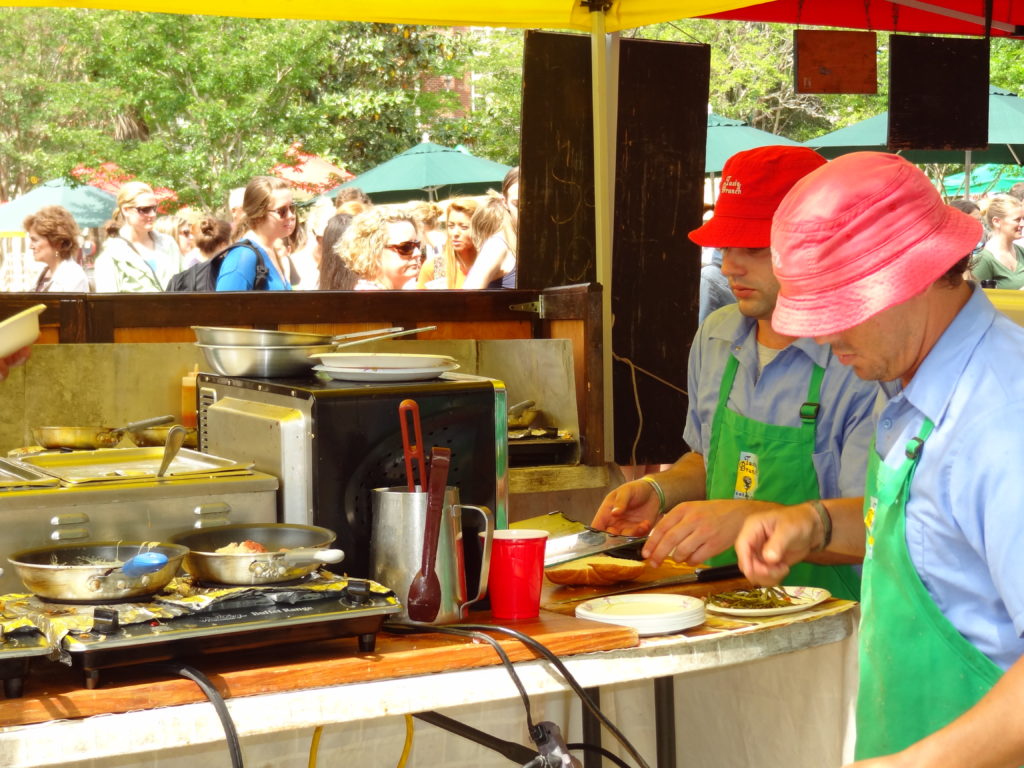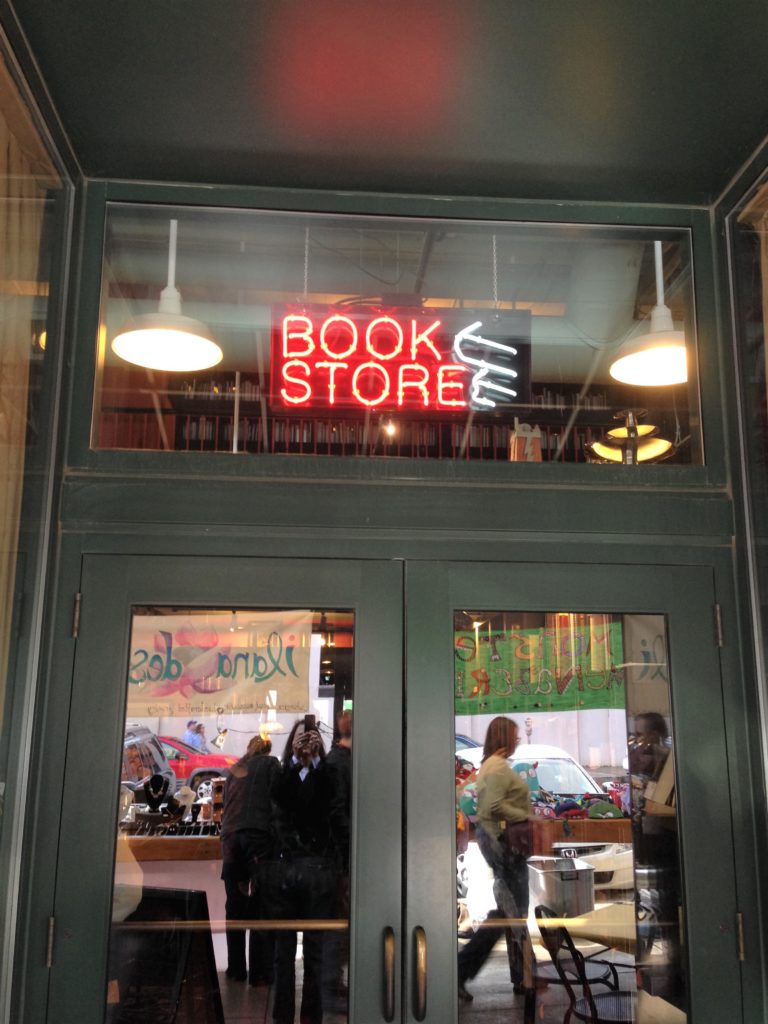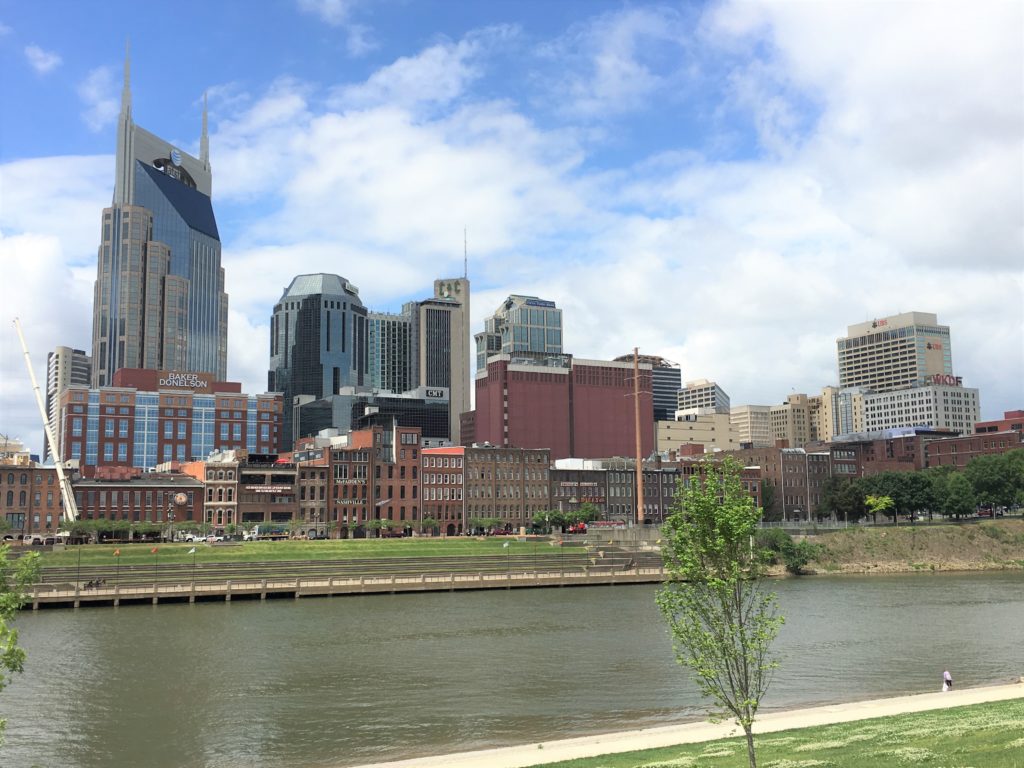A chef I know uses coffee shops to assess what’s hot in the local food scene when he’s traveling. So in Nashville, we follow the coffee trail to two neighborhoods that are turning Music City into the next “food destination” in the South — Germantown and East Nash.
Germantown
We begin with dinner at Rolf & Daughters, housed in a 100-year-old brick “industrial-chic” factory in the Germantown just north of the State Capitol. This resto was Bon Appetit’s #3 Best New Restaurant in America in 2013 and has been frequent James Beard Award nominee. Serving rustic and contemporary “peasant food,” Belgian chef Philip Krajeck has shaped a cuisine is regional and seasonal; it’s recognized for home-made pastas and bread doughs and adventurous combinations with an ingredient list the length of your forearm. Among the three of us, we chose appetizers such as a salad of Hakurei turnip, date, almond, rye and dandelion greens and another salad of Misticanza, spring greens, herbs, green garlic and sauvignon blanc vinegar. In tandem, the dense sourdough bread with seaweed butter was an appetizer in itself. These led to three entrees: thick and sweet Brook Trout, spinach, spring onion, morels, ramps (wild leeks); heritage pork, fennel, orange, tomato conserva, with a side of shelling bean stew; and Tagliatelle, Sapelo Island clams, green onion with lemon.
Of course we had to check out the coffee scene in the 18-block Germantown neighborhood, so the next morning we headed to Barista-Parlor, the third location of the Nashville coffee house and occupying a former sign shop.
Included was the de rigueur chocolate assortment, a swirling explosion of color and design and the latest coffee preparation gear (becoming so prolific we’ll soon need an REI for the coffee culture). I now have replaced my collection of first-generation Starbucks’s aluminum thermoses with KeepCup, the sustainably manufactured sippy-cup-style reusable plastic container that preserves the true flavor and doesn’t trash the environment with more paper and nondisposable materials. Before collecting my latte, I splurged for a decadent, 100-layer sugar-coated donut filled with strawberry cream from Five Daughters Bakery (we later visited one of their locations in 12 South). The scene was Southern urban chic, techies and others working on their laptops; near us, a group from a local office was holding a morning meeting at one of the community tables.
What’s “modern” about Germantown is its history as the first residential subdivision of Nashville after the Revolutionary War. It’s a familiar story – a deteriorating downtown neighborhood is slated for “urban renewal” until a group of community preservation advocates convince the powers that be of a more evolved approach.
Listed in the National Historical Register, the area is a collection of diverse residential styles, from 1830s bungalows with decorative wood trimming (suggesting old Europe) to two-story late 19th century brick dwellings (one soon to become a stylish B&B). Mixed in are loft and warehouse-style retail businesses, churches and the popular all-you-can-eat Monell’s, known for its traditional Southern cooking.
That evening before the Bonnie Raitt concert, we took an early seat at Monell’s, where there are rules – get there early so as not to wait in line, take your place in the next empty seat (no spaces) whether you like the looks of the people next to you (or not) and absolutely no cell phones. Food arriving in bowls or platters is always passed to the left and always completely around the table. There is no alcohol, but the sweet tea and regular iced tea are far better compliments to the fried and stewed cooking. Fried chicken is a regular staple, and each night has a second meat or fish to the routine fried chicken (tonight was beef pot roast, the last time was fried catfish; other evenings might be meatloaf, pork chops or chicken ‘n’ dumplings). Monell’s also serves a country breakfast and lunch.
It’s a wonder we could move after the experience – slaw, chicken salad, turnip greens, corn souffle, white beans, mashed potatoes,biscuits and gravy, flat field beans – what am I forgetting? We did have to pass on the banana cream pudding for dessert. All this currently for $17.48 a person (including tax). In the next room, a gospel choir was celebrating a birthdays – and suddenly the entire restaurant became a sweet hand-clapping revival chorus of “Amazing Grace.” There is nothing like the South when these spontaneous moments of unity appear. We were definitely in the right spirit for the church pews at Bonnie’s sold-out concert at the famed Ryman Auditorium, the “church of country music.”
East Nash
The next morning we took our coffee at Crema in East Nash, another industrial-residential neighborhood that is reimagining itself. We decided that among the formidable local contenders for coffee, Cremea tops our list. Just across the Cumberland River from downtown, East Nash is where chef Sean Brock chose to put his second location of Husk, the all-star Charleston, S.C., restaurant that has helped shaped Southern cooking’s new wave. While preserving favorites like ribs and cheese grits, these foodies are defining an ingredient-driven cuisine that reinterprets the regional bounty in Charleston, Savannah, Columbia, Richmond, Asheville and Nashville. Diversifying economically, these cities are attracting younger and worldlier residents who are reenergizing local arts and culture.
For more insight into the versatile Nashville food scene, check out Eater and its descriptions of “the hottest restaurants in Nashville right now.”
Nashville's Booming Food Scene




